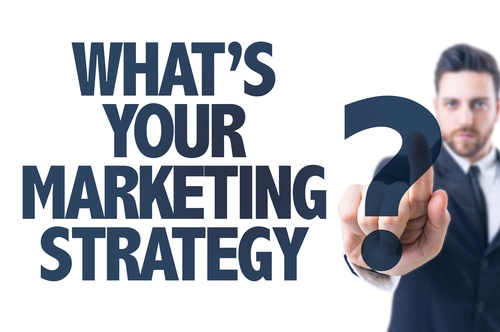Develop a Successful Marketing Strategy
Many entrepreneurs have a great idea for a product or service. They are confident that they are offering something that’s new, innovative and desirable. However, they don’t always think about how they will make their potential customers aware of their services and this lack of vision could have severe consequences. Developing a marketing strategy is easy with these six steps.
1.Why: Refine your Message
Why do you do what you do, why does your company exist, and why should anyone care? You'll want to have clear and concise answers to these questions!
"People don't buy what you do, they buy why you do it." - Simon Sinek
In the early days of a business you may not be clear on who you are trying to reach, how you are going to reach them, or how to speak in a compelling way about your business. After six months of being in business you should be able to gauge whether or not your marketing efforts are effective and it’s at this point that you should refine that message. Your company’s central idea may need to be expanded or more targeted, but it is during this retrospective time that you establish the company’s message for the next 6 – 12 months.
2.Who: Identify Your Target Audience
If your message is too broad because you're trying to speak to everyone, you'll end up speaking to no one.
You have to make an emotional connection with your message.
To do this, you have to know who you are primarily speaking to. Even if your business is for everyone, you'll want to identify who your primary target is so you can speak into pain points and make an emotional connection.
So who are you primarily trying to reach?
Are you trying to reach college students or soccer moms? Maybe your customers are banking executives, accountants or office managers. It’s important to develop a narrow focus. By stating your intent to serve a specific portion of the population, you may feel that you are excluding many others. The reality is that a more targeted approach is an excellent way for you to direct your marketing strategy in a vital direction.
3.What: Define Your Product or Service
More...
It’s imperative to come up with a short, simple answer for what your organization does. Sometimes this is as easy as naming your category or industry. A short statement such as: “We offer accounting services for doctors and dentists,” or “We manufacture reusable water bottles,” is all that’s required. This is the beginning of creating an easy way for customers to remember you.
4.Where: Positioning Products or Services in relation to Competition
If you want to succeed, then it’s important to identify your competition and figure out how your offering is different or better than what they do. Where is your product faster, cheaper or easier to use than what your competition sells? Highlight those features and benefits in your marketing strategy and heavily promote them to your target audience.
5.How: Defining Marketing Methods & Channels
The possibilities for reaching your customers are practically endless, but you have to know how your target audience receives their information. Do they live for social media? If so, then you’ll want a Facebook page and a Twitter account. (learn about social media marketing here) Do your customers read a traditional newspaper? If they do, it may be wise to take out print advertisements. Perhaps your clients search online for new service providers, making a content-rich website an absolute must. Others may prefer to receive flyers or brochures via the mail. Identify how your customers like to receive updates and use one or more of them to get your message out.
6.When: Establish Goals / Create a Marketing Budget
Based on your marketing strategy, what your marketing goals for the next 12 months? Use these goals to guide you in discovering how much it will cost to reach your target audience via their preferred methods for one year.
Now consider how much your company can spend on marketing for the coming year. Typically, this is based on overall projections for the company’s next 12 months. This budget will help you determine when you can afford to accomplish certain tasks in your marketing strategy over a given period of time. If the marketing goals are bigger than the budget you have two choices:
- Increase the time to reach your goals, or
- Increase your spend for your marketing budget
The marketing goals and budget should be reviewed every few months to determine if it is accomplishing its goals or needs to be adjusted. Creating appropriate goals and budgets will contribute to the effectiveness of your marketing strategy and long term success of a business.
We love stories and would like to hear from you!
Obviously, there are no guarantees of success; however, if you do the above, your chances for success are improved.
Why not tell us about your own marketing strategies and how you are doing? Please do so, either in the comments below, or by submitting a guest post to us. We review these posts carefully, and as long as your contribution adds something to the entrepreneurial community we’d be happy to feature it on our site with a link back to yours!
Learn More About Developing Successful Strategies in my book The Next Level Entrepreneur

